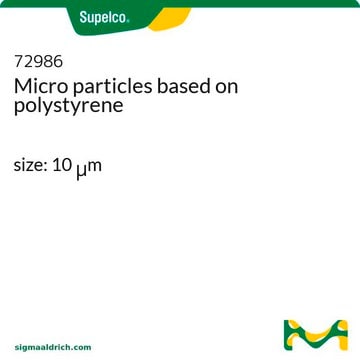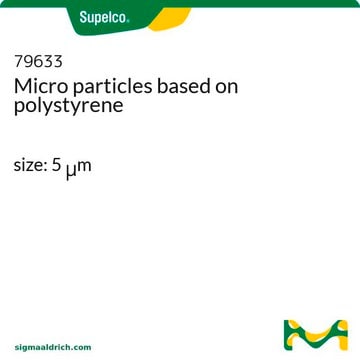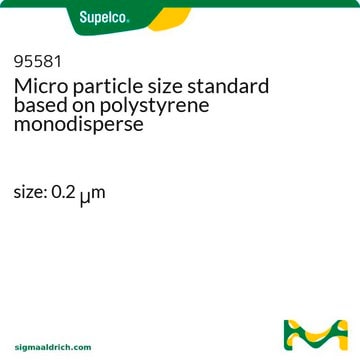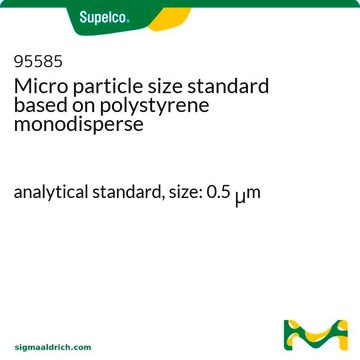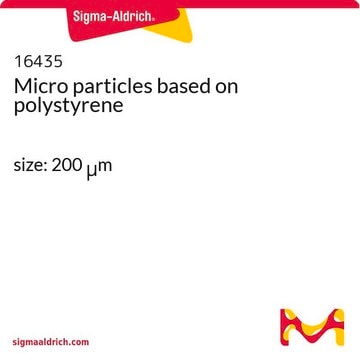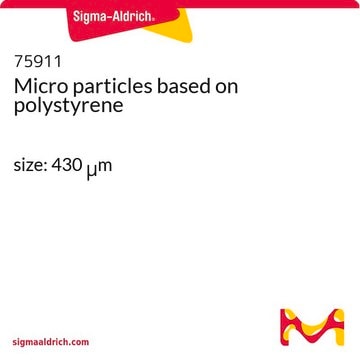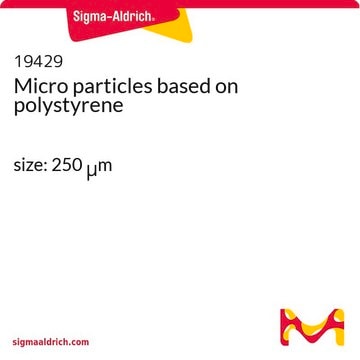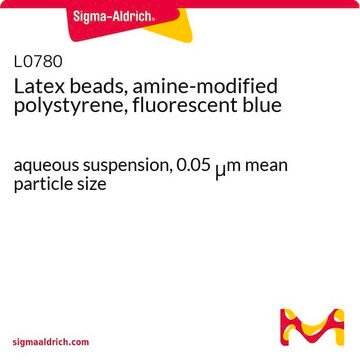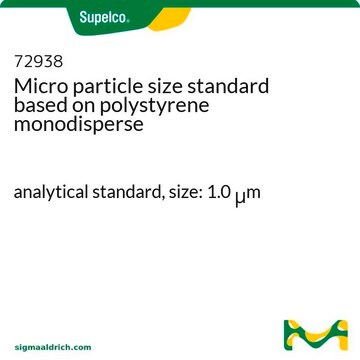The product was not test using the UV-vis system. Therefore, the data are not available.
43302
Micro particles based on polystyrene
size: 100 nm
Sinônimo(s):
Latex beads from PS
Selecione um tamanho
Selecione um tamanho
About This Item
Produtos recomendados
Formulário
aqueous suspension
concentração
10% (solids)
tamanho de partícula
100 nm std dev ≤0.01 μm
densidade
1.05 g/cm3
temperatura de armazenamento
2-8°C
Procurando produtos similares? Visita Guia de comparação de produtos
Categorias relacionadas
Descrição geral
Aplicação
- Electron Microscopy.
- Cell Counter Calibration.
- Immunodiagnostics, especially for latex agglutination tests, and
- Phagocytosis Research.
Nota de análise
Código de classe de armazenamento
10 - Combustible liquids
Classe de risco de água (WGK)
WGK 3
Ponto de fulgor (°F)
Not applicable
Ponto de fulgor (°C)
Not applicable
Equipamento de proteção individual
Eyeshields, Gloves
Escolha uma das versões mais recentes:
Já possui este produto?
Encontre a documentação dos produtos que você adquiriu recentemente na biblioteca de documentos.
Os clientes também visualizaram
-
When measured by UV-vis, at what absorption peak does this bead appear?
1 answer-
Helpful?
-
-
Are the microparticles in a suspension sterile? Or is it possible to sterilize the suspension?
1 answer-
The polystyrene microparticles offered for sale are not sterile.
Although autoclaving is a common method of sterilization, polystyrene microparticles are not autoclavable. Filter sterilization is also not a practical method. There are no available protocols for sterilizing polystyrene microparticles. From the remaining methods for sterilization, it should be possible to sterilize in 70% ethanol for 30 minutes and then rinse away the ethanol with sterile water. For small batches, UV radiation would be another option.Helpful?
-
-
What kind of surface modification are performed on these particles?
1 answer-
These particles possess a negative charge and have residual sulfate end groups as a result of the manufacturing process. This is not considered to be a functional group as would a carboxyl-, aldehyde-, or amine-functionalized product.
Helpful?
-
-
Tween 20과 같은 분산제가 함께 첨가되었는지 문의드립니다.
1 answer-
Micro Particles or Latex beads are supplied in aqueous solutions composed of polymer particles with water. No surfactant has been added.
Helpful?
-
Active Filters
Nossa equipe de cientistas tem experiência em todas as áreas de pesquisa, incluindo Life Sciences, ciência de materiais, síntese química, cromatografia, química analítica e muitas outras.
Entre em contato com a assistência técnica